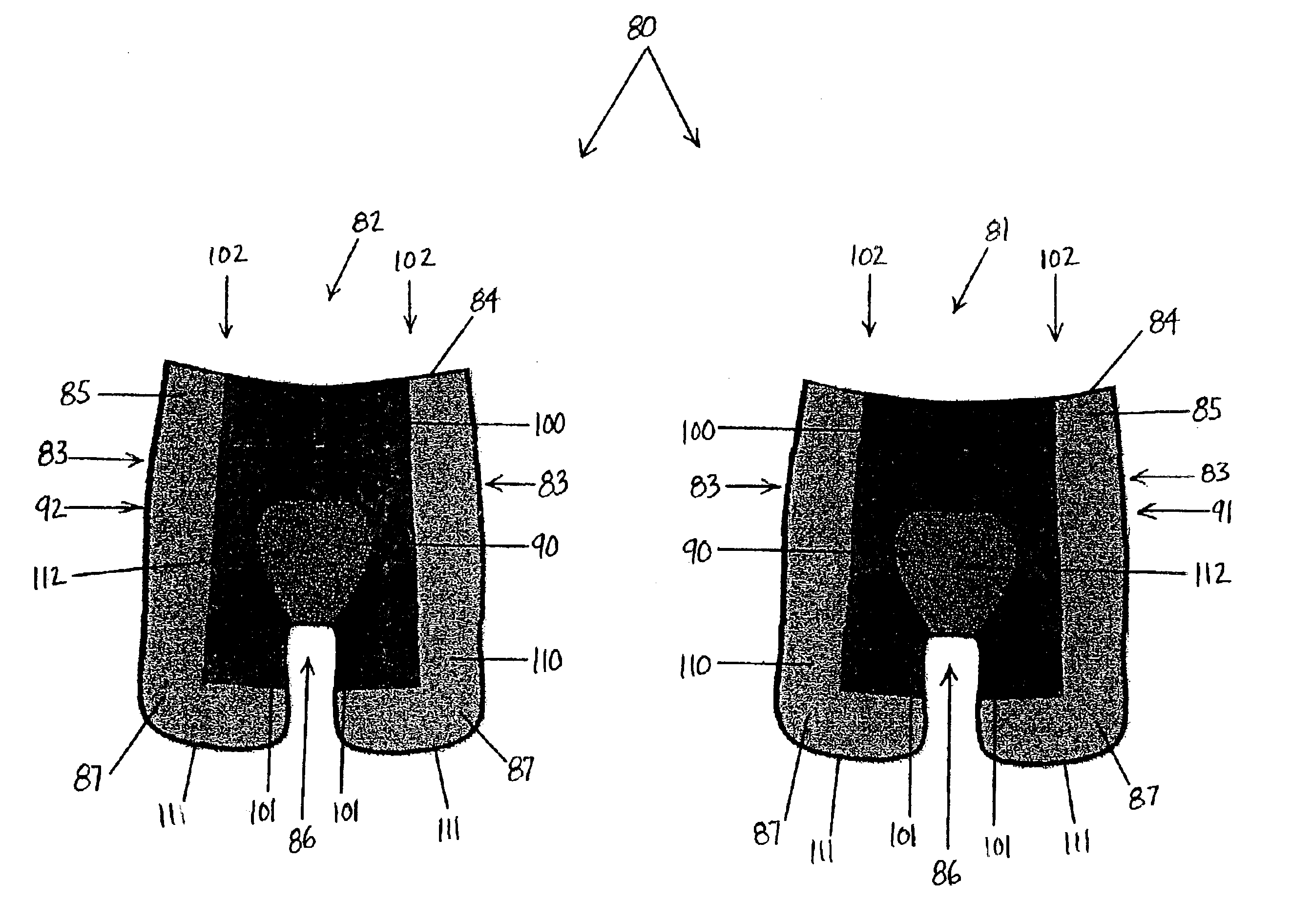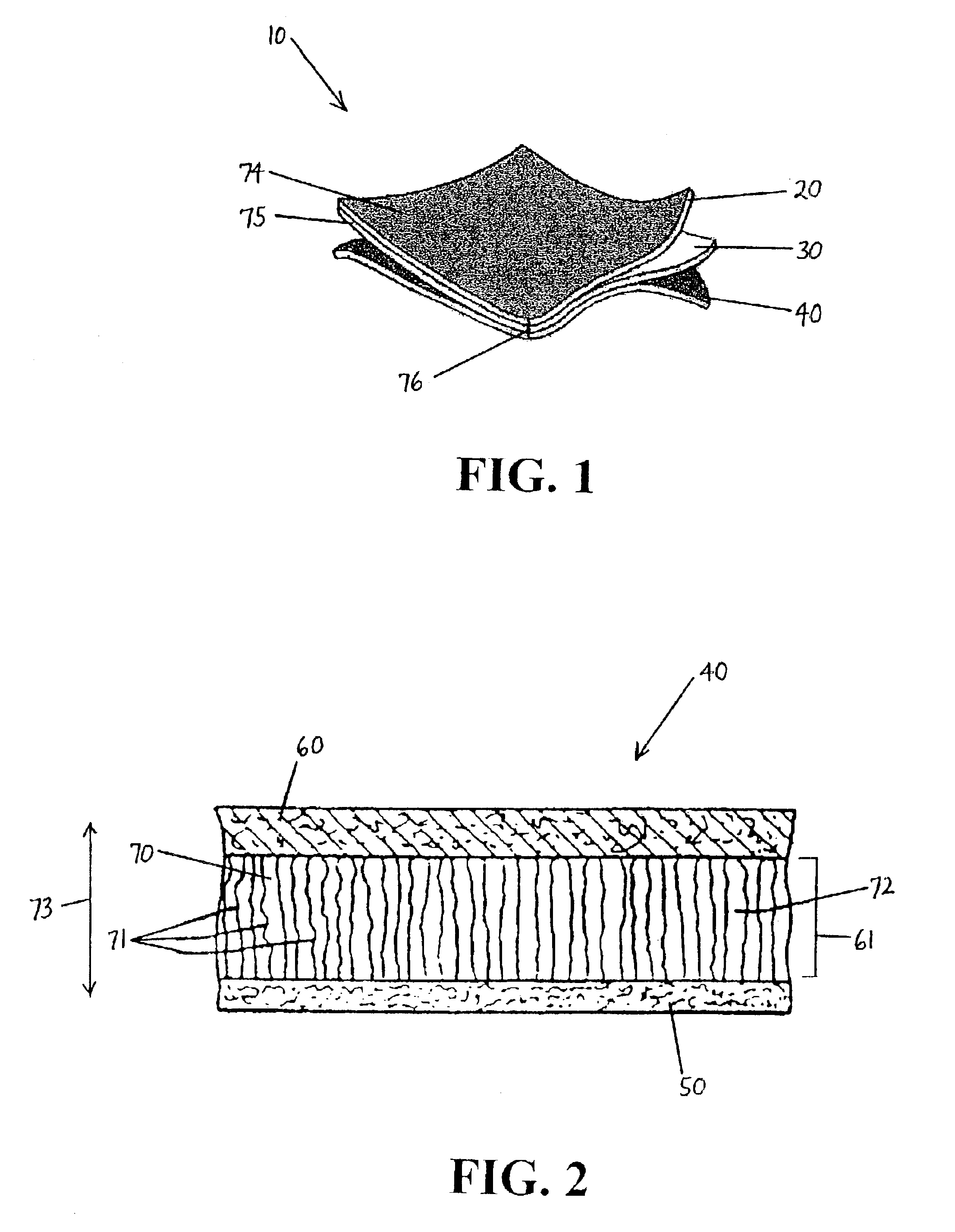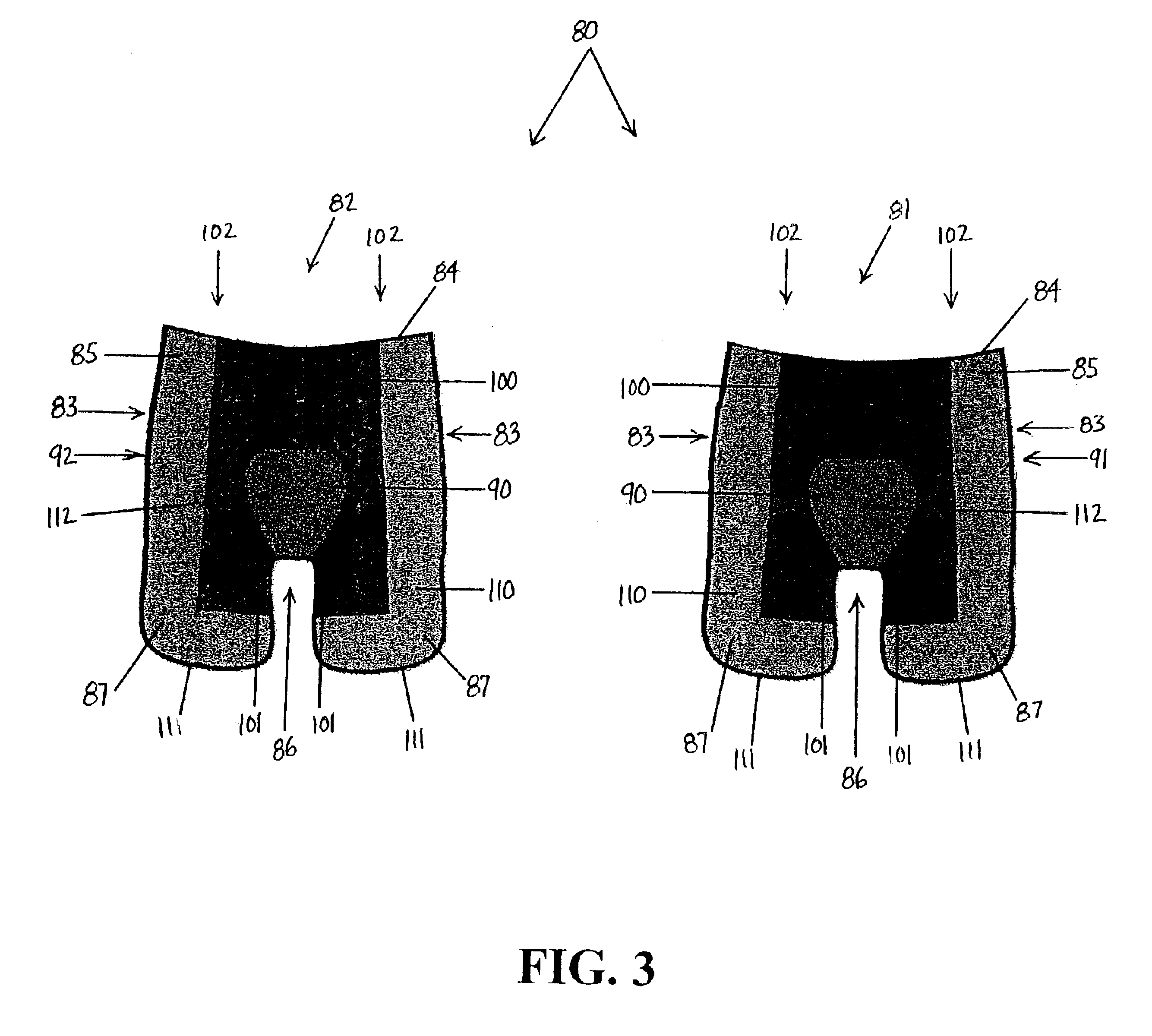Protective fabric and apparel systems
a technology of protective fabric and apparel, applied in the field of textile fabrics, can solve problems such as bacteria growth and possible infection, and achieve the effect of reducing contact stress and reducing abrasion
- Summary
- Abstract
- Description
- Claims
- Application Information
AI Technical Summary
Benefits of technology
Problems solved by technology
Method used
Image
Examples
Embodiment Construction
[0038]Embodiments of the present invention provide a multi-layer protective fabric system and apparel incorporating such a system. Such embodiments are advantageous for removing moisture from a wearer's skin, reducing contact stress with the skin, and decreasing abrasion. FIGS. 1-4 show aspects of such embodiments. Referring to the embodiment in FIG. 1, a multi-layer protective fabric 10 of the present invention includes three layers. An inner layer 20 comprises an abrasion-resistant material having a low friction coefficient. A middle layer 30 comprises a porous, cushioning material. An outer wicking layer 40 is adapted for wicking moisture away from a wearer's skin. The protective fabric 10 cushions a wearer's skin, removes moisture from the skin, and reduces stress to the skin.
[0039]The outer wicking layer 40, as shown in FIG. 2, includes three layers. An inside layer 50 contains hydrophobic material. An outside layer 60 contains hydrophilic material spaced apart a predetermined ...
PUM
 Login to View More
Login to View More Abstract
Description
Claims
Application Information
 Login to View More
Login to View More - R&D
- Intellectual Property
- Life Sciences
- Materials
- Tech Scout
- Unparalleled Data Quality
- Higher Quality Content
- 60% Fewer Hallucinations
Browse by: Latest US Patents, China's latest patents, Technical Efficacy Thesaurus, Application Domain, Technology Topic, Popular Technical Reports.
© 2025 PatSnap. All rights reserved.Legal|Privacy policy|Modern Slavery Act Transparency Statement|Sitemap|About US| Contact US: help@patsnap.com



